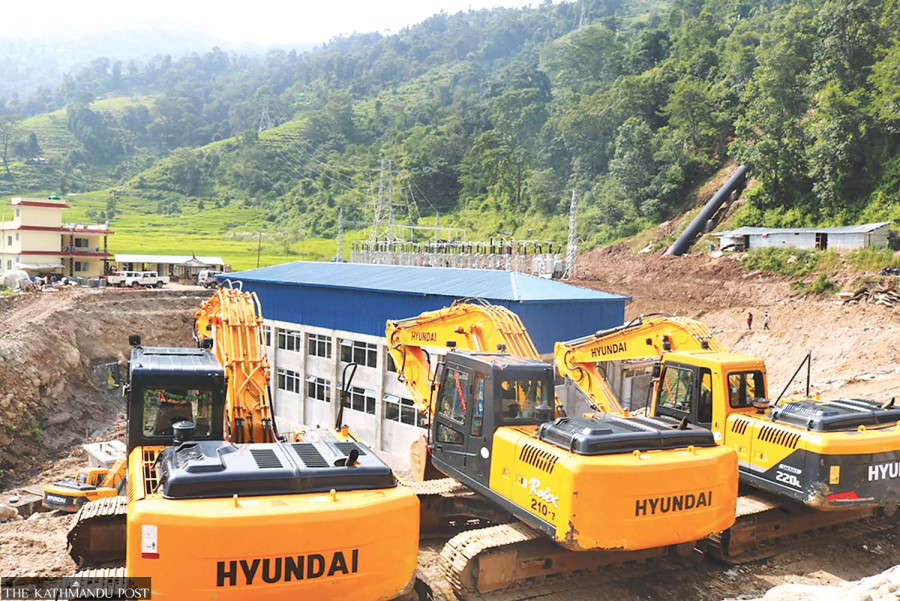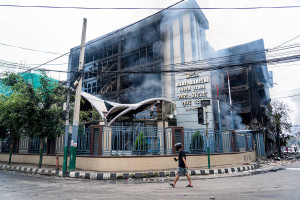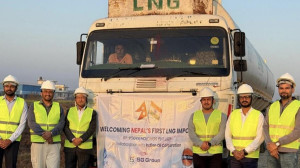Money
FDI pledges to Nepal inch up 5 percent amid policy tweaks
Experts say legal reforms helped attract modest growth, but tax uncertainty and regulatory bottlenecks continue to deter investors.
Post Report
Foreign direct investment (FDI) commitments to Nepal grew by a modest 5 percent in the last fiscal year that ended in mid-July. Experts attribute this slow pace to legal and procedural challenges despite some policy reforms.
According to the Department of Industry, Nepal received FDI commitments worth Rs64.96 billion for 840 projects in the review period.
“FDI has grown slightly due to liberal policies and amendments to legal provisions. The flow is expected to improve this fiscal year despite global uncertainty, as Nepal receives most of its FDI from China and India,” said Prakash Kumar Shrestha, a member of the National Planning Commission.
China and India continue to be Nepal’s major sources of foreign investment.
A significant policy change occurred in January with the issuance of an amended ordinance that allows foreign investors to make equity investments in Nepali industries by purchasing units in venture capital funds or through specialised investment funds registered under the Securities Board of Nepal.
However, restrictions remain for specific agricultural sectors, including animal husbandry, fisheries, beekeeping, fruits, vegetables, oilseeds, pulses, and dairy.
Most investment commitments during the review period were directed toward small-scale industries. The department recorded pledges for 824 small-scale projects, followed by 10 medium-sized and six large-scale projects.
The service sector attracted the highest amount of FDI commitments, with Rs30.90 billion pledged for 84 projects. The tourism sector followed with Rs26.82 billion committed to 304 projects.
In addition, Rs3.84 billion was pledged for 55 manufacturing projects, Rs1.84 billion for 384 information, communication and technology sector projects, Rs1.46 billion for 12 agro and forestry projects, Rs50 million for two infrastructure projects, and Rs25.50 million for a single energy project.
In the last fiscal year, foreign investors repatriated Rs1.84 billion in royalties and Rs9.61 billion in dividends. The department collected Rs838.68 million in service fees.
According to Nepal Rastra Bank, the country received Rs11.09 billion in FDI inflow (equity only) during the first eleven months of the last fiscal year, until mid-June.
“The primary motive of foreign investors is profit. However, tax uncertainties in Nepal send the wrong message,” said Shrestha.
Experts have long pointed to inconsistencies in tax policies and regulatory uncertainty as major deterrents. Foreign investors frequently cite Nepal’s complicated tax regime as problematic. To attract large-scale investments, they say, Nepal needs to conduct a serious review of its tax structure.
One particular concern is how the government treats royalties paid by multinational companies. Instead of classifying them as business expenses, Nepal taxes them as dividends, which experts say sends a negative signal to prospective investors.
Shrestha also noted that the domestic market is too small to support large-scale production, which makes Nepal less attractive for foreign capital.
He said the process of obtaining FDI remains lengthy and cumbersome, requiring engagement with multiple agencies. Challenges with land availability and acquisition further complicate investment efforts.
“The bureaucracy is another problem,” he said. “Frequent staff changes, lack of clarity, and lack of expertise in relevant departments often affect service delivery.”
Nepal's landlocked status poses another hurdle externally. Limited access to international markets discourages many foreign investors, and export constraints are significant.
“Even when investors commit to projects, many do not follow through because of policy hurdles. Despite frequent amendments, issues persist,” Shrestha added.
He also criticised the lack of openness in Nepal’s private sector. “Our private sector is still conservative. They are not proactive in collaborating with foreign investors, essential for investment to materialise.”
He gave the example of cement production: “If Nepal collaborated with Indian investors on cement, it wouldn’t face issues exporting to India. We need more joint ventures with India and China.”
FDI in Nepal has dropped by nearly 70 percent over the past six years, raising concerns about the country's ambition to graduate to middle-income status by next year.
According to the World Investment Report 2025: International Investment in the Digital Economy, published by the United Nations Conference on Trade and Development (UNCTAD) in June, Nepal’s FDI inflow declined to $57 million in 2024, down from $185 million in 2019—a sharp fall of 69.18 percent.
FDI plays a critical role in the economic growth of developing countries like Nepal. It brings new technology, enhances competitiveness, improves human capital, and connects local economies to global markets. However, the effectiveness of FDI is often shaped by domestic conditions, particularly governance and corruption.




 7.12°C Kathmandu
7.12°C Kathmandu












%20(1).jpg&w=300&height=200)
